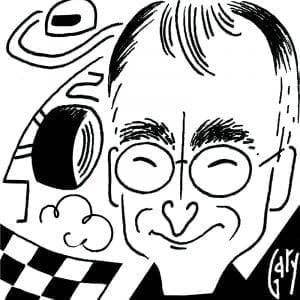Mark Hughes: Ferrari should learn from history
"Ferrari needs a better-balanced, harmonious line-up. It needs Sainz Jr"

The row raging then was between younger minds and hotter heads than those of today’s disagreement and had become poisonous. That poison was a significant contributor to the circumstances in which Villeneuve crashed and died at Zolder.
The small independent teams of 1982 (FOCA), with their customer engines, were justifiably concerned that they could be swept out of existence by the arrival of much bigger automotive teams and their sophisticated and expensive turbocharged engines. The governing body’s president, Jean-Marie Balestre, was openly hostile to the Bernie Ecclestone-led independents and was stacking the odds even further in favour of the manufacturers in his framing of the rules. It looked as if he was actively seeking to deny the independents of Brabham, Lotus, McLaren, Williams et al the oxygen of competitiveness, reducing their bargaining power, possibly to the point of extinction.
Believing themselves to be fighting against oblivion , the FOCA teams had found a highly disingenuous loophole – running their out-powered cars up to 65kg underweight, equalising performance against the governing body-assisted manufacturers. The FOCA teams were unilaterally giving themselves equalisation against the Ferrari and Renault turbos via the water-cooled brakes ruse.
So when the FOCA cars of Nelson Piquet and Keke Rosberg were disqualified from the first two places in the Brazilian Grand Prix for being flagrantly underweight, FOCA (representing about 70 per cent of the grid) refused to take part in the San Marino Grand Prix. That meant the only four fast cars (Ferrari and Renault) putting on a show race for most of the distance – which helped Didier Pironi to take advantage of the peculiar circumstances to ‘steal’ the win from Villeneuve, who’d been the faster Ferrari all weekend. Villeneuve was furious, the team didn’t back him up, and so now there was poison internally and externally heading to Zolder.
In the disagreements of 1982 and today, each side had legitimate positions that were mutually exclusive with the other side. But in ’82 that triggered anarchy. Now F1 is more mature, how will it be resolved this time? Ferrari’s current objections about being forced to limit its budget (see page 82) are legitimate – as are those of the smaller teams facing extinction.
Just as in ’82, they need to co-exist for the benefit of F1, but how? Just as in 1982, Ferrari faces internal friction. The Scuderia often loses out when a manufacturer gets serious about F1 – Mercedes in the 1950s and now, Honda in the 1980s and ’90s. The Schumacher era was the outlier. All previous eras of Ferrari domination came when the manufacturers were absent. With a new manufacturer era only just beginning but armed with a good car and turbo engine, Ferrari had the perfect window of opportunity in ’82 – but it blew it through not controlling its drivers. Not that there could have been any controlling those two when pitched together as rivals for the title. Recruiting Pironi – brave, political, fast, ambitious, all to an extreme degree – when it already had enormously fast, brave, proud and uncompromising Villeneuve was asking for trouble. When the car wasn’t competitive, as in ’81, it was fine. But the ’82 car was the best on the grid. A Ferrari driver was going to become World Champion. Except it was disaster instead. If Imola hadn’t triggered it, it would’ve been something else. This was an unworkable combination, guaranteed to turn nasty and dangerous.
In the present, Ferrari looked at its line-up and decided that Leclerc/Vettel was too difficult – right at the join of the previous generation to the current, with all the pain and pride involved. Vettel had to go. Just as in F1’s political arguments, there are cooler and more mature heads today than back then when, given that Ferrari already had Villeneuve, it needed a more sympathetic character than the ambitious Pironi. Someone quick enough to win when the opportunity arose, but who would integrate seamlessly. It needed, in hindsight, Elio de Angelis alongside Gilles for 1982. The anniversary of Elio’s death has just passed, too. He’d likely not have fatally been in the wrong place at the wrong time in 1986 had Ferrari chosen him for ’82 – and Villeneuve would likely not have been in a fatal state of rage at Zolder.
The stakes are not so high now. But Ferrari should learn from history. Leclerc is its chosen one. It doesn’t need an in-house rivalry. That wasn’t a good fit with the intensely competitive Vettel. The events of Monza, Sochi and Interlagos last year pointed to the direction that was heading. Ferrari needs a much better-balanced and harmonious partnership. It needs Carlos Sainz Jr.

